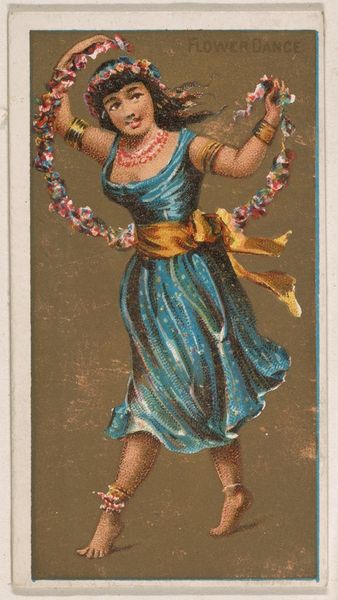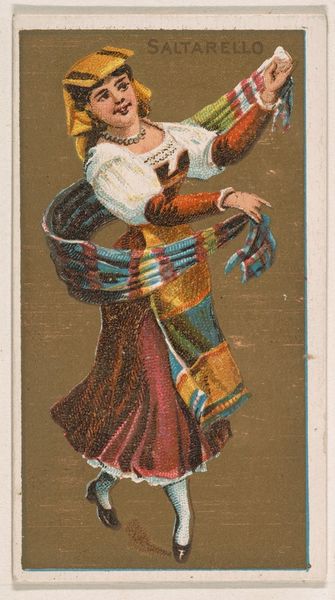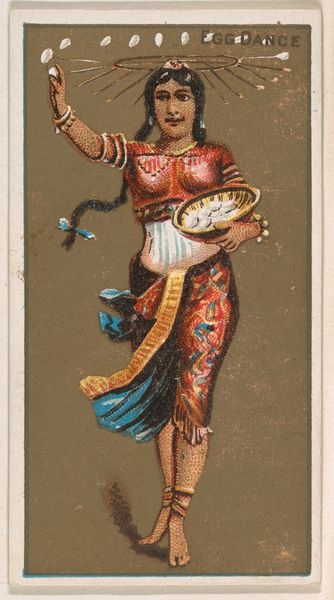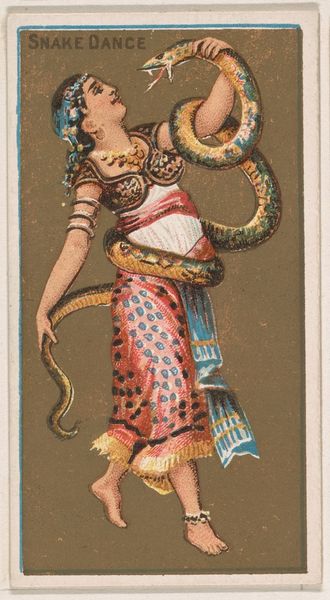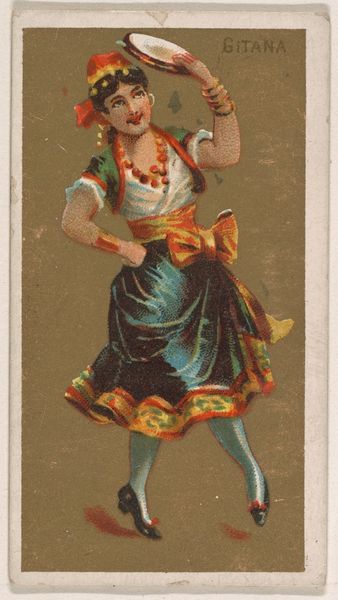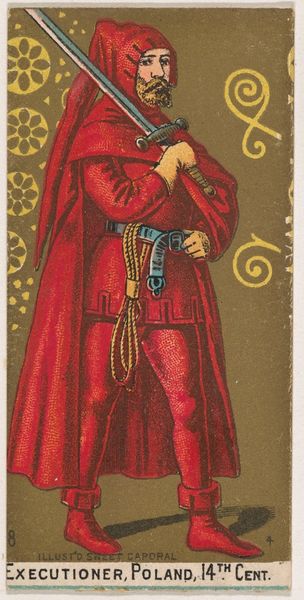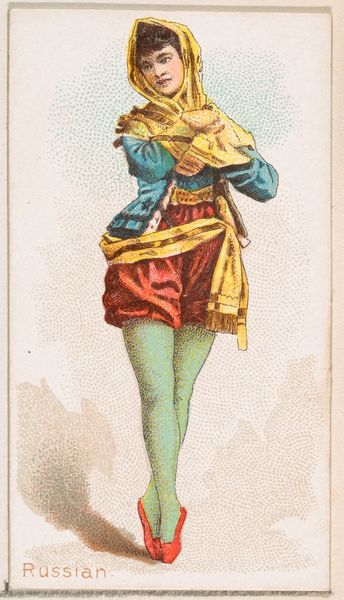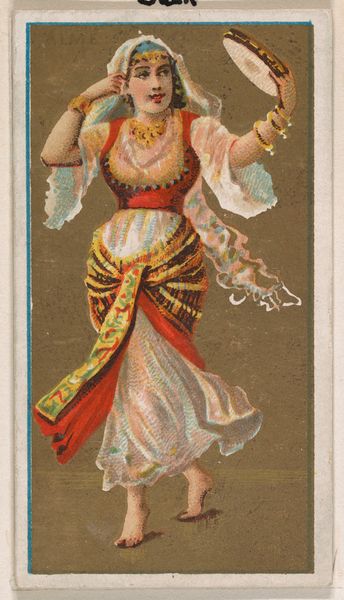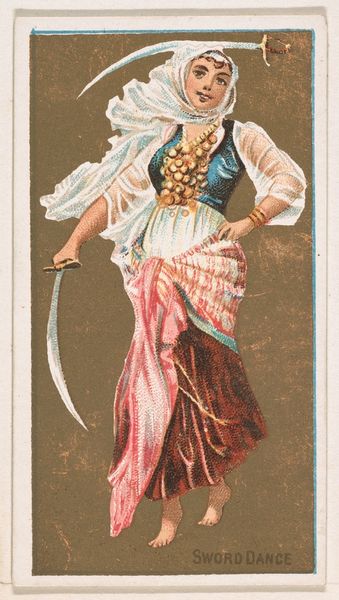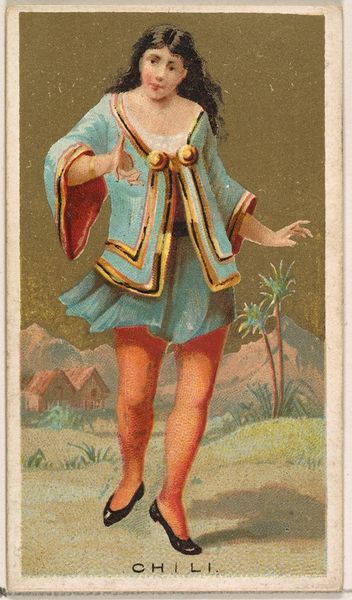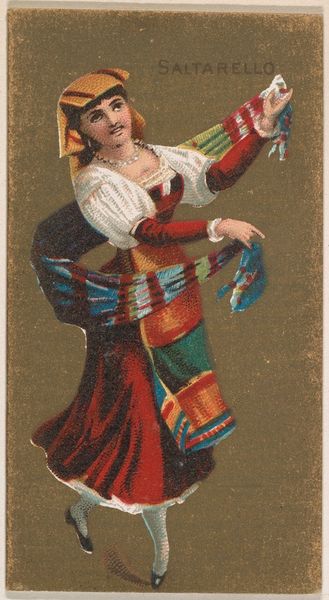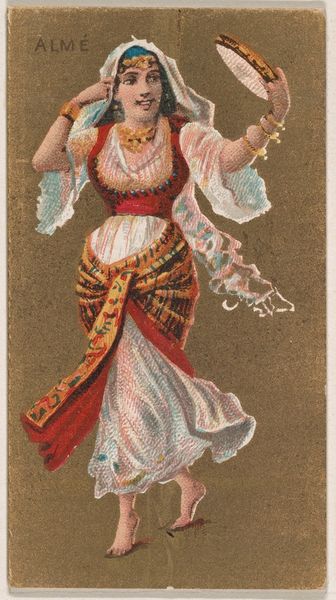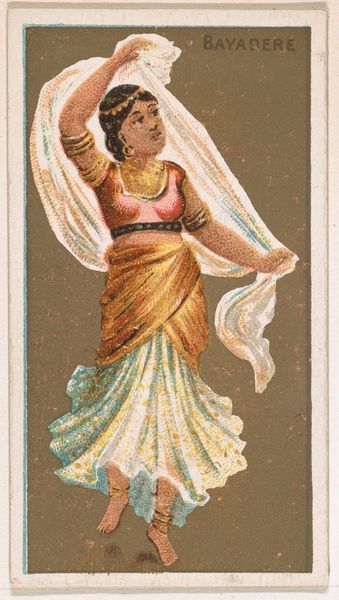
Shawl Dance, from National Dances (N225, Type 1) issued by Kinney Bros. 1889
0:00
0:00
drawing, lithograph, print, watercolor
#
portrait
#
drawing
#
lithograph
# print
#
figuration
#
watercolor
#
orientalism
#
genre-painting
#
academic-art
#
watercolor
Dimensions: Sheet: 2 3/4 × 1 1/2 in. (7 × 3.8 cm)
Copyright: Public Domain
Curator: This vibrant lithograph, watercolor and drawing titled "Shawl Dance, from National Dances" was created by Kinney Brothers Tobacco Company in 1889. It's a captivating piece that brings us face-to-face with cultural representations of the late 19th century. Editor: It’s so dynamic! The way the figure’s body twists and the shawl flows – there’s a real sense of movement captured within such a small frame. And the colors, the deep reds and greens, are striking against the neutral background. Curator: Precisely. This work reflects the popularity of "National Dances" in visual culture, fitting into a larger trend of orientalism within the arts. Kinney Brothers capitalized on the exotic appeal of other cultures to market their products. Editor: So, the intention here wasn’t necessarily to document, but rather to create a fantasy? The figure's exaggerated pose and costume feel more theatrical than ethnographic. Look at how the shawl is rendered; it's all about decorative effect. Curator: Exactly. The politics of imagery during this period involved using images to both promote and package goods, reinforce colonial power dynamics and create visual languages that were palatable to western consumers. Notice that the artist uses techniques rooted in academic art, adopting a realistic but also romantic style. Editor: Yes, there is academic precision, especially in the figure's anatomy. But the detailing on the fabric has this almost dream-like quality that keeps pulling me in. There's something artificial about the light source too. Curator: The creation and circulation of images were fundamental to creating imagined connections to different cultures, both fostering fascination but also sometimes reinforcing unequal power dynamics and hierarchies. It served as a social tool as well as a commodity object. Editor: In looking at the detail, I am struck at how they rendered movement. Overall, I leave this little picture seeing that, beneath the historical context, it is first and foremost about lines in motion. Curator: Ultimately, examining this piece within the context of visual culture from the 1880's allows us a chance to think about the relationship between art, commerce, and power. The details matter!
Comments
No comments
Be the first to comment and join the conversation on the ultimate creative platform.

